Within seconds of landing, Tonga felt Polynesian.
There was a light breeze in the air that took me back to my previous trip through the South Pacific, and that combined with the scent of coconut oil had me feeling as though I’d never left. As I entered the tiny airport, I snapped a quick photo when I noticed immigration had strung fairy lights across their desks. A smiling official welcomed me to their country, and the family in the queue behind me wished me an incredible trip.
I made my way outside and grinned.
I couldn’t believe I was actually in Tonga: a dream destination of mine for so long.
I bought a SIM card from the U-Call desk outside, withdrew 600 TOP from the ATM, and spotted my taxi driver from afar.
We wound our way around the Tongatapu coastline in a comfortable silence, me gazing out at the sunset, him focusing on the road, and the smell of woodsmoke and citronella wafting in through the open window.
“Do you offer tours?” I asked him, breaking the silence. A mosquito squealed in my ear as the words left my mouth and it was humid, so humid. My skin was now slick with a blend of sunscreen and sweat and I wondered if I would ever feel comfortable again.
“Yes.”
“I have only one day in Tongatapu,” I told him. “Tomorrow. And it feels like a waste of time to not see anything. I’d like to see as much of the island as possible while I’m here.”
“I can help,” he said.
“Great! How much will that cost?”
“The normal cost is 300,” he said, which is roughly 150 US dollars. “But I can’t charge you that because you’re on your own. So, 200?”
A hundred dollars was a lot of money, and I’d read that the island was far from exciting. The prices I’d seen online for one person ranged from $44 with a guy whose hostel had terrible reviews to $123 for a tour company without reviews. If I didn’t go with this guy, I’d likely end up leaving having seen none of the island — it was 8 p.m. so hardly the time of night to start running around travel agents in search of a better deal.
“Okay,” I told him. “Let’s do it.
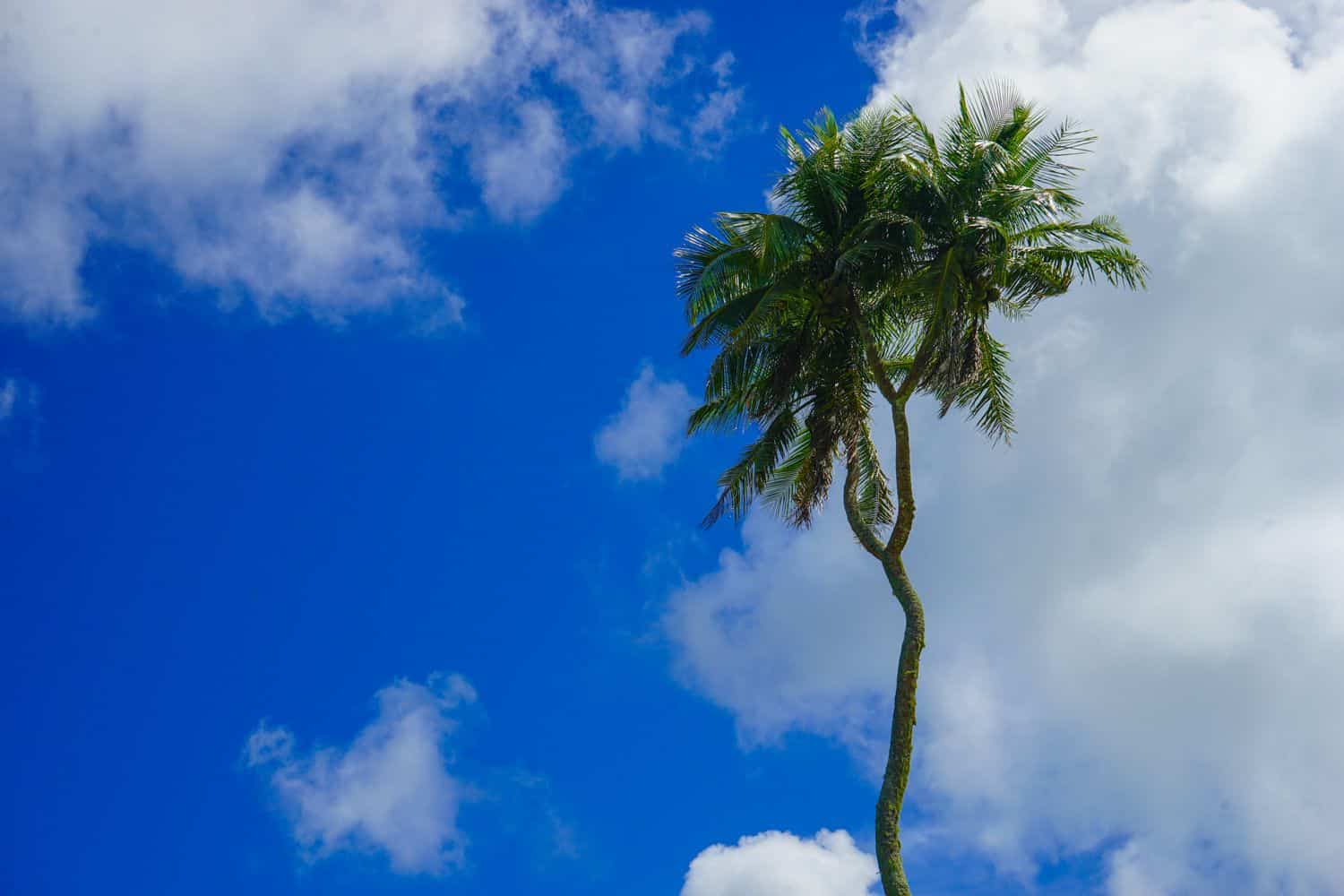
My guesthouse was basic but inexpensive.
When it comes to budget travel in Tongatapu, there are plenty of options, but finding something that gets incredible reviews is close to impossible. Still, Backpackers Townhouse was the best-rated I could find, and with dorm rooms for 25 TOP/11 USD a night, I was convinced it would be worth any potential downsides. The hostel had decent reviews, mentioning the friendly owners inviting guests into their home and cooking them feasts, and gushing over how the hostel seemed to attract cool people from around the world.
It quickly became apparent that I was the only person staying there. The interior was dark and damp, and the only sounds the crowing of roosters and snuffling pigs. I spun around to face the owner.
“Can I get the Wi-Fi password?”
“Ah, no Wi-Fi,” she said apologetically. “It’s too expensive to run.”
My eyes widened and I chewed on the inside of my mouth as I attempted to arrange my face into some kind of nonchalant expression. I had booked the hostel because of its advertised free Wi-Fi and was suddenly facing an unexpected digital detox. I grabbed my phone and grimaced when I saw no signal glaring back at me.
“Okay, no worries,” I said, lying through my teeth. As always, I was a walking bucket of worries. As always, they’re made worse when I can’t google them.
I collapsed into bed minutes later, staring up at the ceiling as a fan whirred uselessly at my face. I missed my partner, I missed being on Twitter, I missed not being covered in sweat, I missed not panicking about mosquitoes. A dog howled from beside my window and my bed shook as the neighbours slammed a door.
Budget travel: it was good to be back.
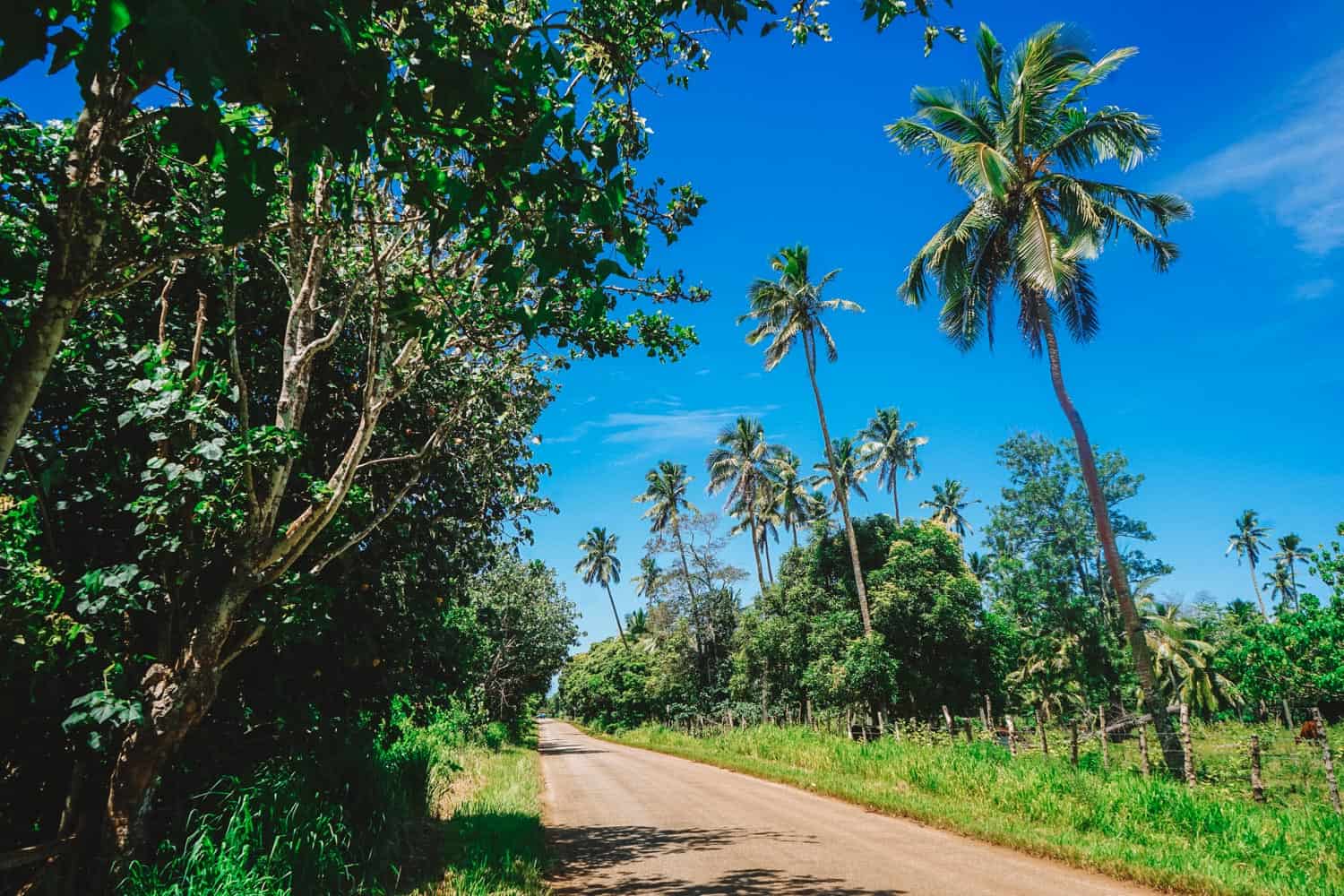
“My name’s Edward,” the taxi driver told me as I clambered up beside him.
“Lauren,” I replied, reaching out a hand to shake his.
“I want to tell you something, Lauren,” he said, as we followed a sign promising a series of blowholes. “I have been a tour guide in Tongatapu since 1994.”
“Oh, wow!” I exclaimed, impressed.
“Look at this.” He thrust a small book into my hands. “The second edition of the Lonely Planet for Tonga.”
“Badass.” I love looking through old guidebooks and seeing how places have evolved over the years.
“And if you turn to the first page, there is my name.”
And so it was, highlighted in pink. The author thanked Edward for his services to her while she was on the island in the 90’s.
“These days,” he told me. “Everybody come to the airport and they want to know where is Edward? They carry the guidebook. They say do you know where Edward is? I’m looking for Edward. Now, if I want a rest, I have to leave the island!”
I bust out laughing. “That’s amazing, though. That’s great you have so much business.”
“Next month I will go to Hawaii for three months, just to take a break from the tours!”
I couldn’t quite believe I’d somehow managed to score such a kickass tour guide for my time on the island.
What were the chances?
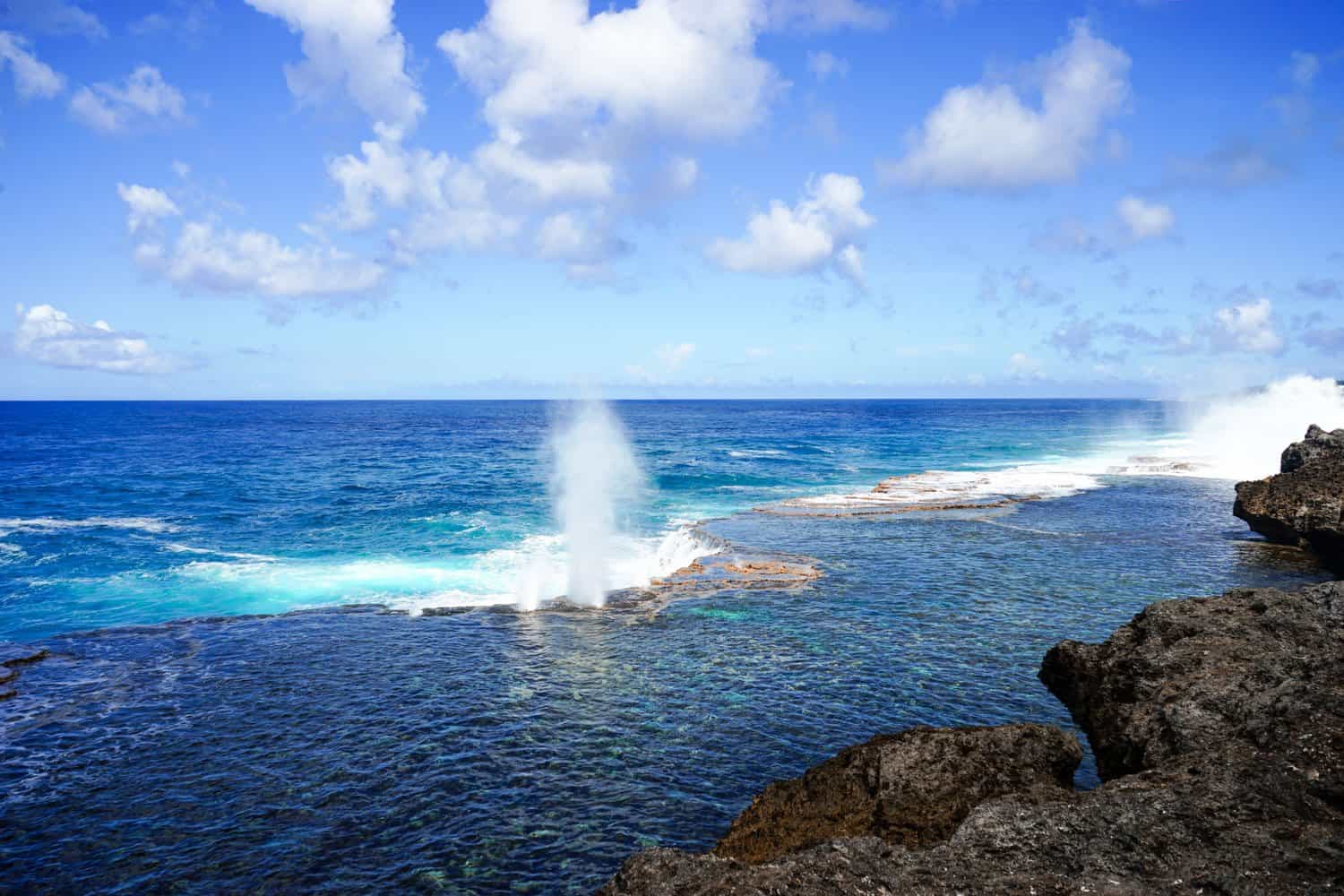
Our morning, Edward explained to me, would be spent exploring the tourist attractions on the west coast of Tongatapu. And the place that draws the greatest number of tourists? The Mapu’a ‘a Vaea blowholes.
Now, if you’re anything like me, you’re already yawning, because blowholes are possibly one of the most boring tourist attractions on the planet.
But these blowholes, guys.
These blowholes.
They were also boring.
Stretching for four kilometres alongside Tongatapu’s southern coast, the Mapu’a ‘a Vaea blowholes are fairly impressive, and if you happen to visit on a windy day, you’ll witness spouts of water shooting 30 metres into the sky.
But they’re still blowholes.
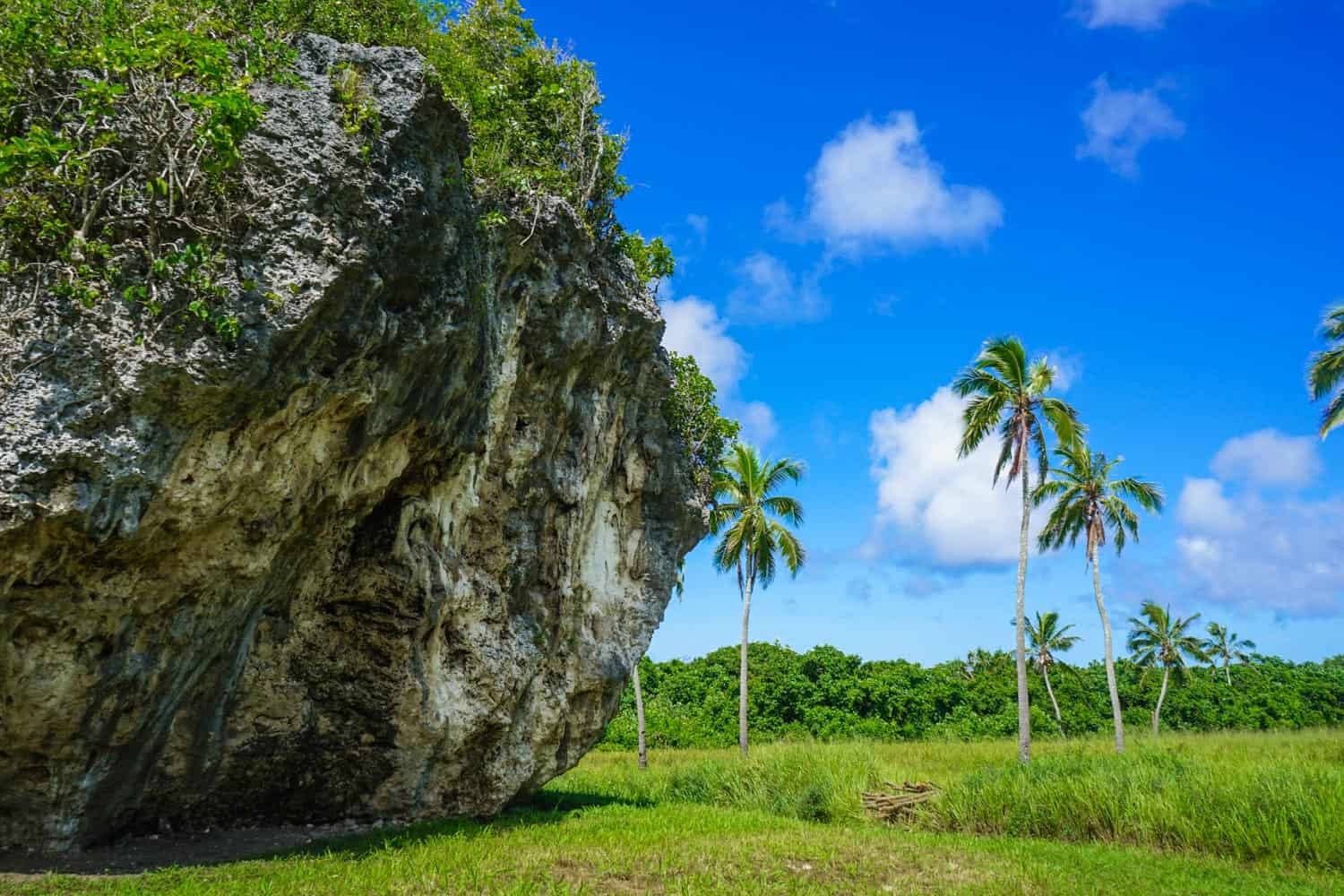
Our next destination was easily my favourite spot on the island. Allow me to introduce you to the unbelievable story of Tsunami Rock.
This giant boulder weighs in at 1600 tons and sits 300 feet inland, having been carried to its final resting place by an enormous tsunami. And the tsunami? Oh, that was created by an enormous eruption of an underwater volcano — no big deal.
As Edward explained the various Polynesian legends associated with Tsunami Rock, I ran my fingers over its rough edges, staring up at its five storeys of height and comparing it to the nearby palm trees that were dwarfed by its size. Standing beside it, I couldn’t comprehend the forces that must have been acting to bring this rock up onto dry land.
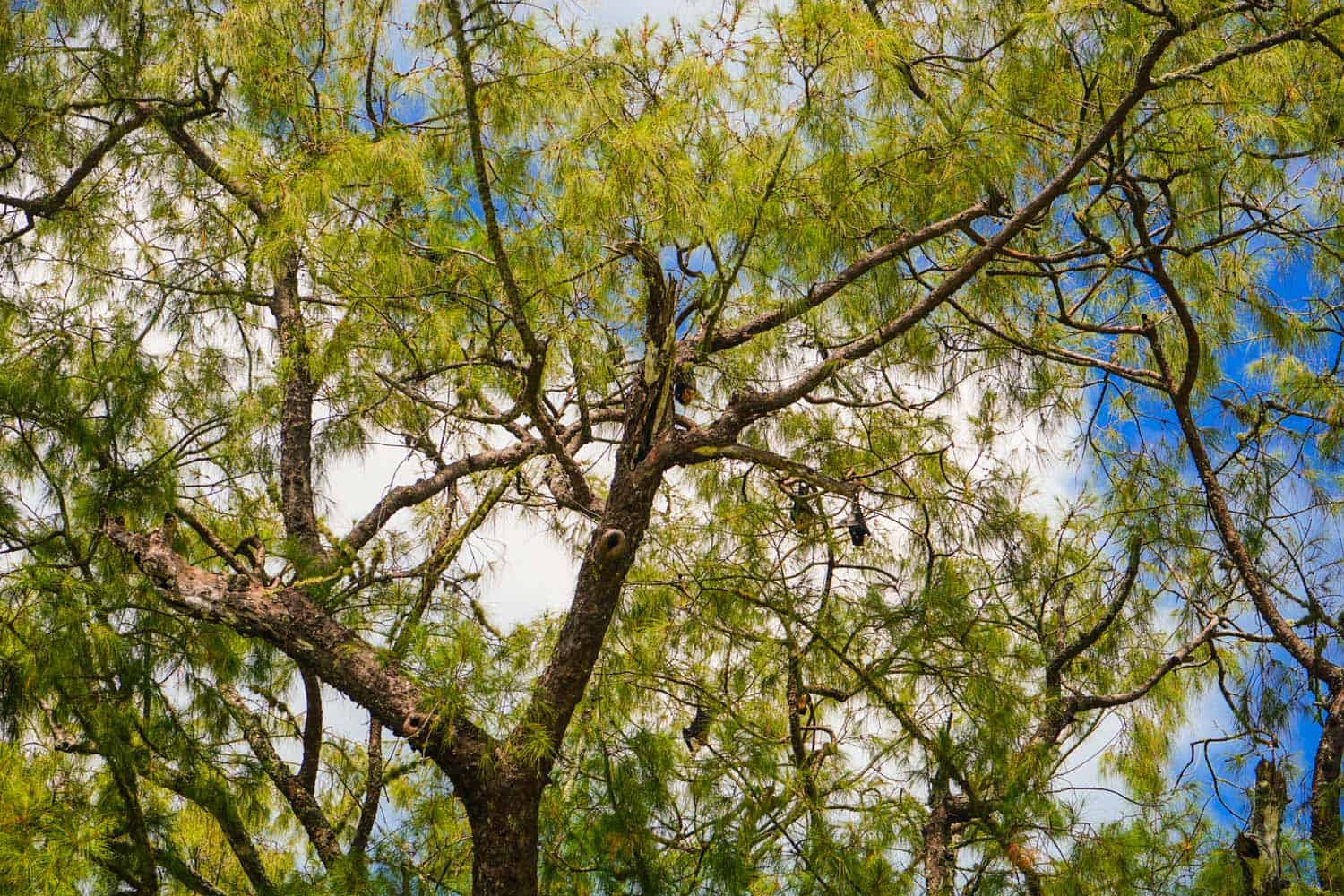
As we wound our way around the west coast, Edward regaled me with Tongan myths and legends, one of which explained how our next attraction found its way to the island.
We pulled up outside somebody’s house and Edward pointed skywards.
“Do you see that?”
“… No?”
“Look harder! In the tree.”
“Not really. I can’t see anything.” I began to panic. “Um…”
“Flying fox!” Edward put me out of my misery. “See? They’re hanging on the branches.”
“Yes! I see them now!” I lied. “Wow!” I couldn’t make out more than a few shadows amongst the leaves, and even then, I had no idea if they were the bats.
Tongan and Samoan legends assert that a pair of flying foxes were brought to Tongatapu by Sina, a Samoan Princess. It was a gift for the current monarch, and upon seeing that one was black and one white, he immediately gave them royal protection. These days, it’s believed these large bats represent the royal family, and as such, it’s illegal to harm or hunt them in any way.
Thanks to this protection, their numbers have steadily increased and it’s now thought that as many as 10,000 live across the islands of Tonga.
The best place to spot them is where we were currently sat: alongside the main road in Kolovai village. Online, people talk about spotting hundreds dangling from a single tree, but as you can see from my photo, the most I saw was like, five.
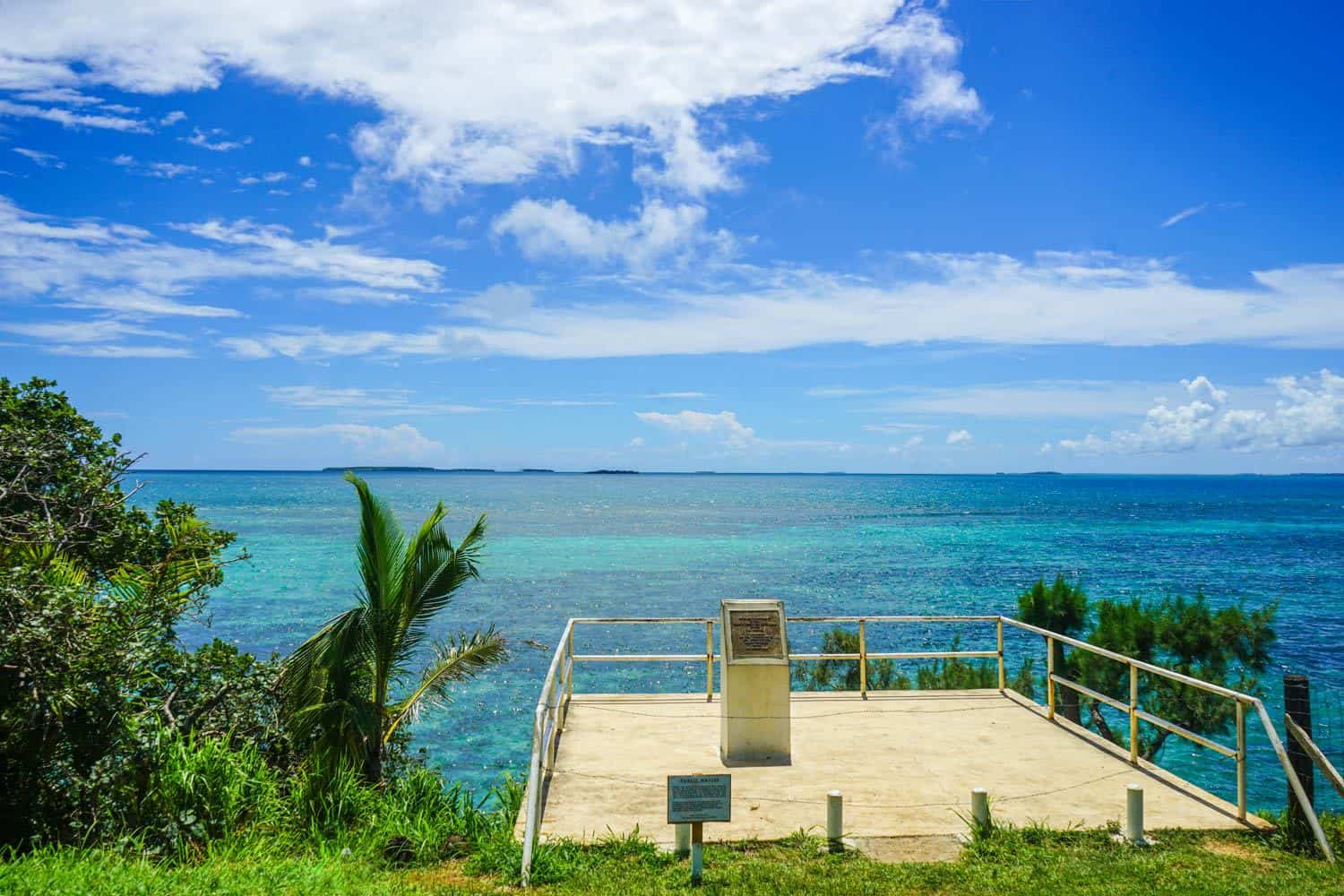
Our final stop on the west side of the island was Abel Tasman’s landing point.
The Dutch explorer was the first European to discover Tonga, way back in 1643. He named Tongatapu Amsterdam, and his notes on the island and its inhabitants were one of the earliest written documents about the country.
While the landing point itself wasn’t exactly enthralling, the colour of the ocean more than grabbed my attention. Look at those gorgeous shades of blue!
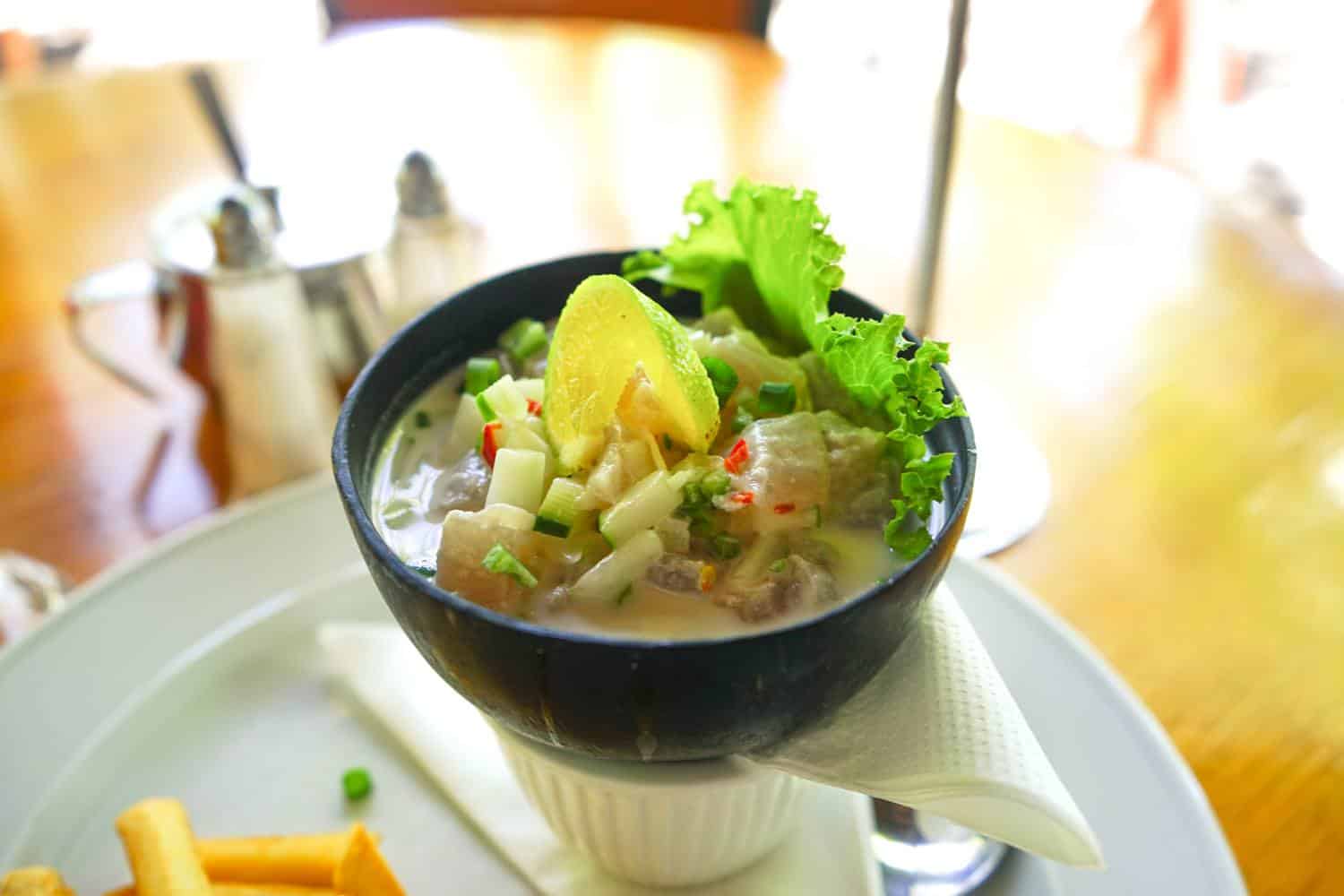
It was time for lunch.
We made our way back to the capital of Tonga, Nuku’alofa, to replenish our energy levels. Upon Edward’s recommendation, we stopped off at Friends Cafe: an expat haunt that’s popular with tourists and locals alike. Although probably more of the former.
It was to be my first real meal in Tonga, so I opted for the one item on the menu that I didn’t recognise. I knew little about Tongan cuisine, so crossed my fingers and hoped that ota ika wasn’t disgusting.
I chose well, as ota ika would turn out to be my favourite local dish and I would seek it out on every island I visited. It’s sort of like a Polynesian ceviche: raw fish marinated in coconut milk and lime juice, with tomatoes, peppers, spring onions, and chillies chopped up and thrown into the mix. It was seriously delicious and worth travelling to the islands for.
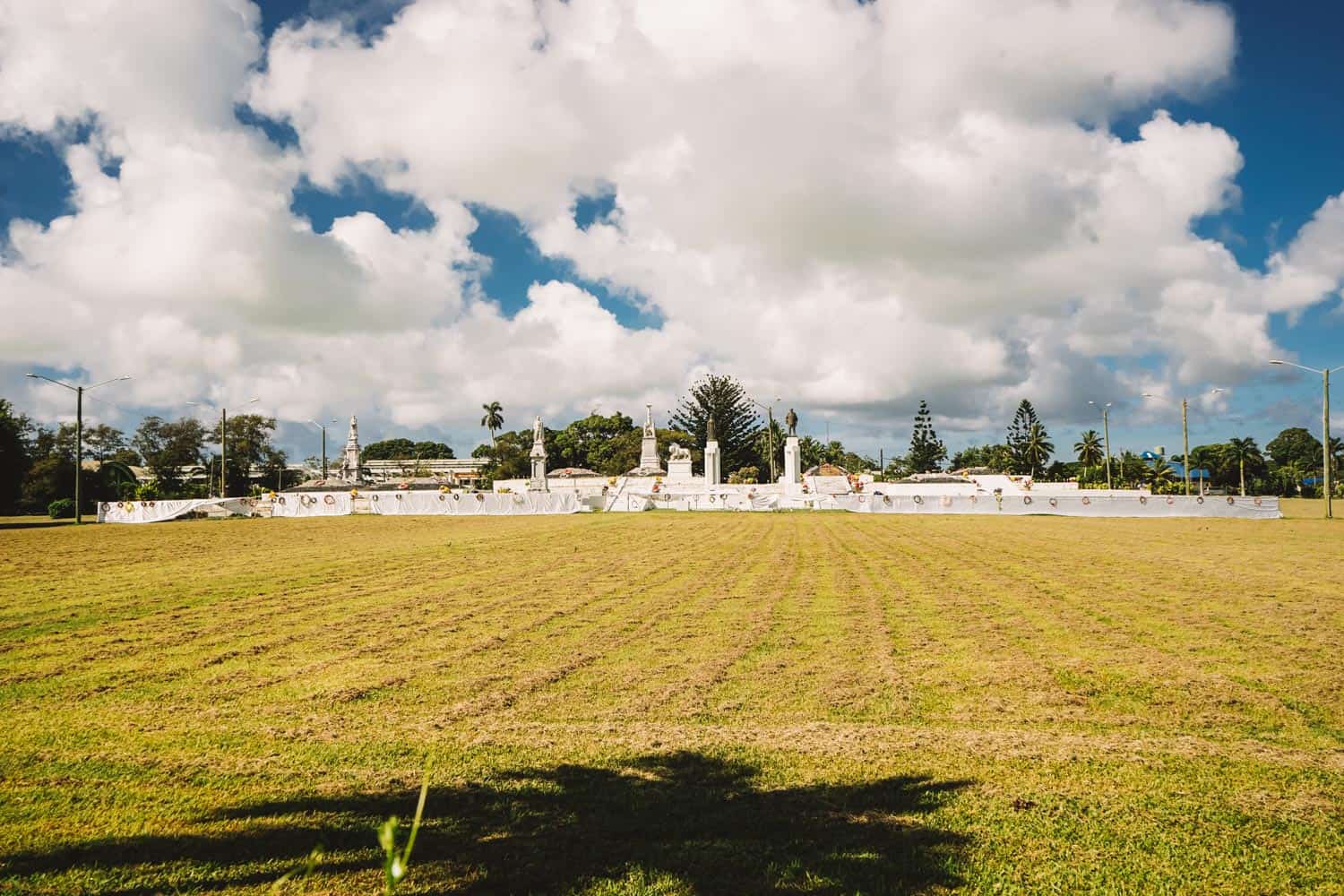
When Edward discovered I hadn’t had a chance to discover the delights of Nuku’alofa on the morning of the tour, he took me on a brief drive of the city, taking me to the royal tombs: a small field that has been the resting place for the Tongan royal family since the late 1800s. The land is tapu — sacred — so you can’t get up close, but I was content to take a single photo from afar.
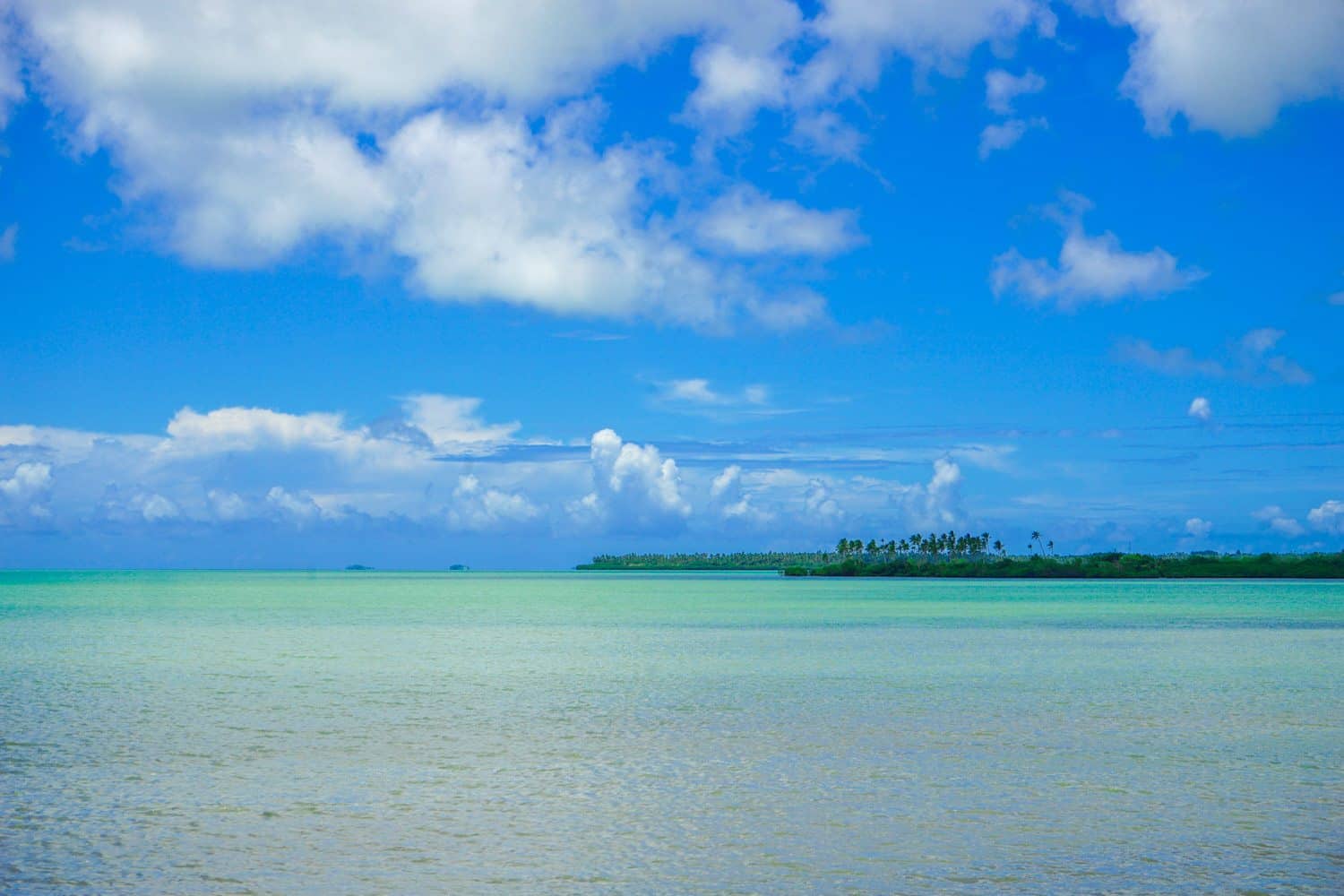
We took off for the east coast to complete our circuit of the island, and our first destination was Captain Cook’s landing point.
It was just as uninteresting as Abel Tasman’s, but I wasn’t here for the history of the land, but rather for the gorgeous views from the road. I sat on the ground and took in the scene, watching as local children splashed water at each other, gazing out at the cluster of palm trees, and thinking about how Tongatapu is more than worth visiting.
James Cook first visited Tonga in 1773 and found the islanders to be so welcoming that he gave the country the nickname, the Friendly Islands. Amusingly, the locals were actually plotting to murder Cook and loot his ships, but after the Tongans couldn’t decide on the best way in which to do so, he managed to leave unscathed.
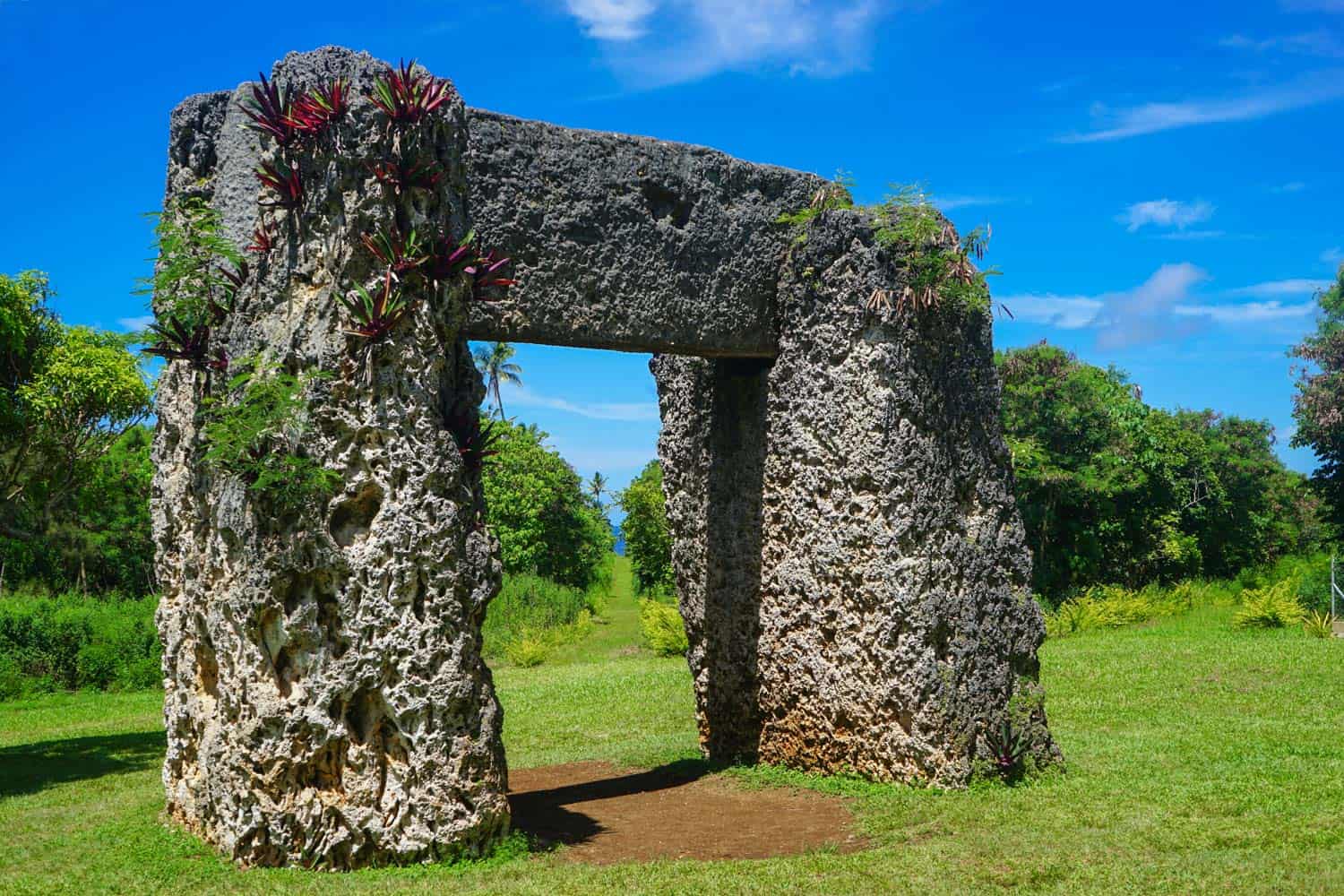
“In your country you have Stonehenge?” Edward asked me as we pulled into a small parking lot.
“Yup.”
“Well, here we do, too. Here we have the Ha’amonga’a Maui Trilithon. It’s the same thing!”
He encouraged me to step outside and I snapped a few photos of a large rock, dating from 1200 AD. For a long time, nobody knew who built the structure and what it was for, with most locals deciding it was created by fishermen to help them figure out the best time of day to head out to sea.
Edward had me stand in a specific place and look down a pathway towards the ocean, asking me to guess what the purpose of this giant structure was. I had no idea.
It turned out that Stonehenge was the clue I hadn’t paid attention to, as this rock is believed to have links with astronomy. If you stand in a certain spot and look down the two separate pathways, you’ll find that one aligns perfectly with the sunrise on the shortest day of the year, and one with the longest.
“Are you a Christian, Lauren?” Edward asked.
“Yes,” I lied, fearful that saying no would offend him.
He smiled. “Then tell me, Lauren, what created the sun and the moon and the earth?”
“Oh, um. Okay, so 13.8 billion years ago, we believe there was a singularity of infinite density comprising the mass and s–“
“God, Lauren.”
“What?”
“God created the universe.”
“Oh, yeah! Yes. I mean, God.”
An uncomfortable silence settled upon Ha’amonga’a Maui Trilithon.
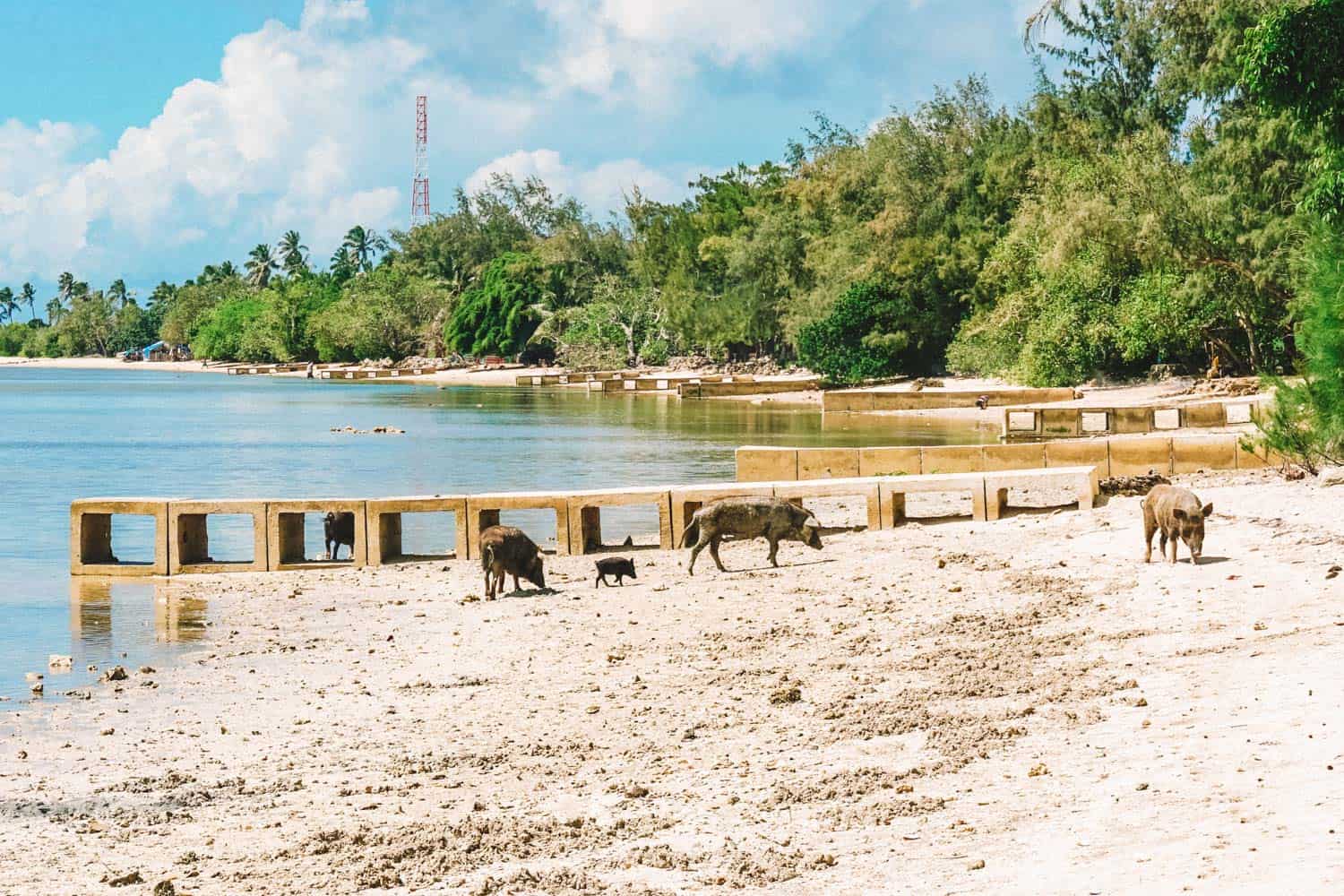
As we left Polynesia’s version of Stonehenge, Edward began to mumble about our next stop and I couldn’t quite work out what he was saying. I managed to catch that he found it funny that tourists were so excited about the attraction and he didn’t understand why, and that it was normal for Tongans. I assumed it would become obvious once we got there.
He pulled up beside a beach and motioned for me to get out.
“Enjoy,” he called out as I shuffled onto the sand.
I wandered along a long stretch of beach, looking around me in confusion. I had seen far better beaches on the tour and in comparison to the rest of Tonga, I knew this was ugly. What was the attraction? Why was I here?
“Gah,” I whispered to myself. “I have no idea what I’m supposed to be looking at.”
I raised my camera to my face and began snapping photos of my surroundings at random, hoping I was capturing whatever it was that I was supposed to. I felt so awkward. I was so confused. I couldn’t see anything special about this place.
“Funny, huh?” Edward called out from the car.
“So funny!”
I turned around and climbed back inside.
“Everybody asks me why the pigs are fishing and I have to tell them I don’t know! It’s just what they do. They have been here for many years and like to live on the beach.”
Facepalm.
We had just been at the biggest attraction in Tongatapu — the famous fishing pigs — and I’d not even realised. Instead I’d stood on an empty stretch of sand, taking photos of an ugly beach, and not noticing the pigs running across the sand in the distance. And in case you think I’m blind, the photo above has a hell of a lot of zoom applied to it in post-processing.
And with that misadventure, I wrapped up my tour of Tongatapu!
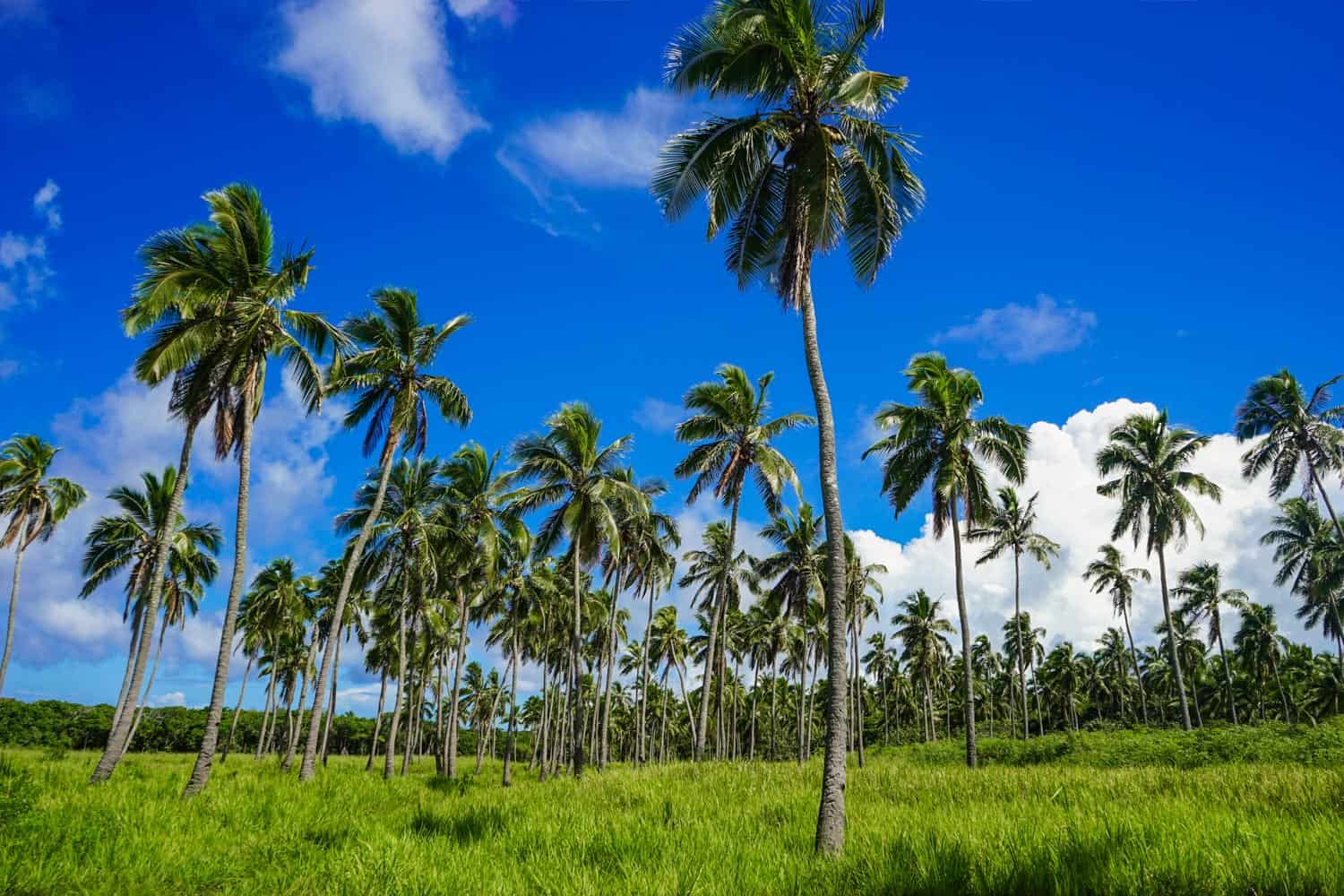
Before I came to Tonga, practically everything I read online advised me to skip over Tongatapu. Having been to several islands, I understand why: the jewels of Tonga — the beautiful beaches and breathtaking scenery — aren’t found on this main island, and you’ll likely get bored after more than a day in town.
However.
I really enjoyed my tour with Edward. While I saw nothing life-changing, I learned a lot about the history and culture of Tonga, got to see a part of an island many people skip over, and managed to fill a day that would have otherwise been pretty boring. I’d say that if you find yourself with a spare 24 hours in Tongatapu — and you probably will given the unreliability of the airline, Real Tonga — it’s worth booking a tour of the island and taking a look around.
Essential Information for Visiting Tongatapu
I stayed at Backpackers Townhouse in the capital of Nukuʻalofa, which is the cheapest and highest-rated budget option in Tongatapu. Dorms are $11 a night and private rooms with air conditioning are $27 a night. It was in a central location with a warm, friendly family, although I was frustrated that they advertise Wi-Fi but don’t actually have it.
Alternatively, if you’re not on a strict budget, take a look at the coolest propety on the island: Tukulolo Treehouses. And in case the name didn’t give it away, yes, these really are treehouses! And what magical surroundings they have; how beautiful they look on the interior.
My taxi driver was called Edward Fakatouma’ulupe and you should hire him for your tour around the island. Do as everyone else does and ask around at the airport for him — he’ll often be there, but if he’s not, your accommodation can put you in touch with him. Everyone knows who he is on the island! An alternative for touring the island include the tour run by Toni’s Guesthouse (but don’t stay there — it gets terrible reviews for its accommodation).
Would you take the time to check out Tongatapu?
Related Articles on Tonga
🇹🇴 The Ultimate Tonga Travel Guide: What’s it Like to Travel in Tonga?
💰 The Cost of Travel in Tonga: A Detailed Budget Breakdown
🐴 Exploring ‘Eua: Tonga’s Forgotten Island
🏖 Ha’apai: My South Pacific Island Paradise
🏥 Hospitalised in Tonga

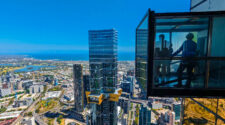

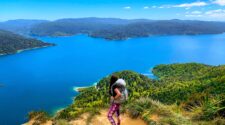
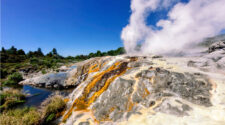
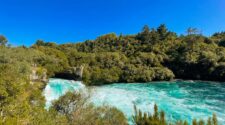
Haha I felt like I was reading about myself in this post. I would have been the same, lying about being a Christian, saying I had seen things I actually hadn’t to be polite. I do that too often, but I would hate to offend!
The island looks gorgeous! How lucky that you stumbled across Edward.
Oh, I’m just waiting for somebody to comment and tell me I need to be more assertive when I travel!
This is an older post, but I am going to respond anyway…
Tonga is a magical place, and you saw that. Just want to say…. no need to lie about being a Christian; Christians “get it” when people do not believe as they. (At least I do.) More offensive to lie to people about it.
The blowholes in Tonga are wonderful! I spent over an hour there. The flying fox are amazing creatures. Too bad you didn’t see their beauty while you were there. I agree; Ha’apai is a wonderful island group and my favorite. We spent 6 nights there. (It was called The Sandy Beach Hotel; could that now be the place you stayed at? It was on the tip of Foa Island.) The longer you are there, the more it grows on you, right? The locals brought their horses out for us to ride along the beach. No saddles, no bits, just a rope around their neck. What sweet people and a marvelous adventure! I wasn’t even offended when a little girl came out and said “Hi Palangi.” I know that is a put-down to tourists and white people, but… that’s ok. I just smiled and said hello back. ;-D
Vava,u was my least favorite, but only because it sees more tourists, most of them “boaties”; the sailing folk. But swimming in that incredible water that is so blue it looks dyed (but isn’t) is another cherished memory. Good thing you didn’t take the ferry. It is mentioned in The Lonely Planet as “The Orange Vomit”. Enough said I think!!
Yes; Tonga is a great adventure. We were there during “weight loss Tonga”; all the locals were dieting. (I understood it was to curtail their high rate of heart attacks.) Of course they made t-shirts to mark the occasion; wish now had purchased one!
Haha! I love your hilarious writing style! Looks like a beautiful island and I’d definitely take a day to see it.
Thank you! It’s definitely worth checking out if you have the time :-)
I love your writing style – you have a distinct and relatable voice that really comes through in your blog. You had me laughing to myself a couple times in this one. Looks like a gorgeous place, and another cool experience under your belt!
Thank you so much! That means a lot :-)
Lol this was brilliant Lauren. I think this probably accurately reflects how a lot of people actually feel on private tours but aren’t honest with themselves. That ceviche thing actually sounds alright too!
Jub
Ha, thank you! It was a fun post to write :-)
Hi Lauren,
We’ve been to many of the same countries as you have been, but one of our absolute favourites was Tonga. Also Borneo. Check out some of our crazy experiences in both places. Oh, and the Azores too! It is fantastic to have the opportunity to experience these three places!
Shirley
Isn’t it so underrated?! More people should visit Tonga. And Borneo. And the Azores! :-)
I almost always lie about my religion! Those blow holes are gorgeous. Boring but beautiful! Miss you.
Miss you more!
Hahaha just loved the way you narrated your experience. Keep exploring!
Wow! lovely place. Loved the way you narrated. I must say that Edward was real fun…:-P
Not sure if that’s sarcastic or not, but yeah, he was great!
What a great adventure – very smooth compared to some others ;) And the ota ika sounds amazing.
It’s so good! I can’t wait to learn how to make it at home :-)
The blowing holes part and the pigs literally made me laughing out loud. Thank you for yet another amusing story,Lauren!
So glad you enjoyed it! It was a lot of fun to write :-)
Ljw
Please note palangi (or older form papalngi) is not an insult. It is just a common term used for people of european/’Caucasians/’white’ ancestry.
I am told it referred to the white sales of the big ships that looked like clouds…but others may have alternative explanation.
Glad you enjoyed your stay.
Currently we are one of the few countries without covid due to very limited arrivals and 3 week MIQ for those who do come in.
We hope it won’t be too long before we can safely welcome visitors again.
Hi Ljw
Please note palangi (or older form papalngi) is not an insult. It is just a common term used for people of european/’Caucasians/’white’ ancestry.
I am told it referred to the white sales of the big ships that looked like clouds…but others may have alternative explanation.
Glad you enjoyed your stay.
Currently we are one of the few countries without covid due to very limited arrivals and 3 week MIQ for those who do come in.
We hope it won’t be too long before we can safely welcome visitors again.